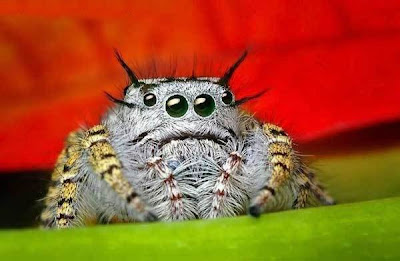Over the past 20 years, Conservation International's Rapid Assessment Program (RAP) has completed 80 surveys identifying more than 1300 new species in 27 countries. The outcomes of the initiative have been documented in its new book Still Counting . New Scientist takes a look at some of the stars of the show.

Blue emperor
Measuring an incredible 20 centimetres in length, the emperor scorpion (Pandinus imperator) is one of the largest in the world. Despite its size, it feeds mainly on termites and other invertebrates. Even its venom isn't particularly harmful to humans in fact, there might even be some medical benefits to this intimidating species.
Compounds from the venom are being tested as potential heart-disease drugs, and the blue fluorescent beta-carbolines covering its body only visible in ultraviolet light are being studied in order to better understand oxidative degeneration in human eye lenses, a major cause of cataracts.
(Image: Piotr Naskrecki)

Devil lizard
The satanic leaf-tailed gecko (Uroplatus phantasticus) is the smallest of 12 species of equally bizarre-looking leaf-tailed geckos. Larger members of the species have more teeth than any other living terrestrial vertebrate species. Found in Madagascar, the geckos hunt small insects and vertebrates. Combined with their bright red eyes, their name seems highly appropriate.
(Image: Piotr Naskrecki)

Flying food
The Goliath bird-eating spider (Theraphosa blondi) is huge: weighing 170 grams, it is the heaviest spider in the world, and has a leg span of 30 centimetres. Despite the name, they mostly feed on invertebrates, but have been observed feasting on small mammals, lizards and snakes.
The large venomous fangs aren't the biggest worry, however: the spider's main weapon is the hair that covers its body. When threatened, it rubs its legs against its abdomen and releases a cloud of microscopic hairs that lodge in the skin and mucous membranes of its attackers.
(Image: Piotr Naskrecki)

Angry insect
Instead of physically attacking its predators, the peacock katydid (Pterochroza ocellata) has developed two highly effective deterrence strategies.
The first of these is disguise. Found in Guyana's Acarai mountains, the peacock katydid, pictured here perched on a branch, resembles a dead, partially damaged leaf and becomes invisible to less observant predators.
The katybird's second defence strategy also uses disguise, but this time the insect mimics an angry bird. If threatened, the insect changes its leaf-like shape to suddenly reveal a pair of bright eye spots and starts jumping excitedly on its long legs. The display is thought to look like the giant head of a bird pecking at the attacker.
(Image: Piotr Naskrecki)

Defensive hook
Found in Cambodia, the fish-hook ant (Polyrhachis bihamata) has a developed a particularly nasty defence mechanism. This large ant (1.5 centimetres) uses the curved spikes on its back to cut into the skin of a predator, and then won't let go easily. On top of this, the ants live in large groups and work together. When attacked, they gather together and hook onto each other, making extracting an individual ant very difficult for a predator.
Their nests are usually in dead tree trunks on the forest floor, so best not to walk barefoot.
(Image: Piotr Naskrecki)
Gallery Here
I have to say, I LOVE the name "satanic leaf-tailed gecko." I mean, that is ACTUALLY it's name. Just awesome. Also, those ants are terrifying.



